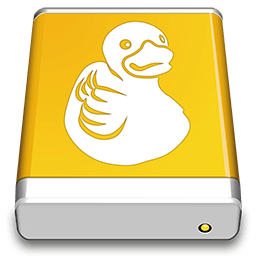04.imperialismmr. Mac's Virtual Existence
This is the Mac’s third in 36 years of existence. But it’s clear to see from this first step that the Mac had to leave Intel behind. These first Macs to run on the M1 chip are low-end models, to be sure, but somehow the M1 chip still manages to run faster and more efficiently than any Intel chip to ever appear in a Mac laptop. “Mac has no conduct record because he has never had an infraction during the entire 16 years in which he has been locked up,” Spell told HuffPost. Spell and his partners, Annie Spell and Tara Zeller, filed Phipps’ 32-page application for clemency in September. Fannie Mae, Freddie Mac tighten some standards, loosen others amid coronavirus crisis GSEs make more changes as crisis worsens March 31, 2020, 5:30 pm By Ben Lane. The biggest totally free game fix & trainer library online for PC Games https://gamecopyworld.com.
-->This article helps you configure OpenVPN ® Protocol clients.
Before you begin

Verify that you have completed the steps to configure OpenVPN for your VPN gateway. For details, see Configure OpenVPN for Azure VPN Gateway.

Windows clients
Download and install the OpenVPN client (version 2.4 or higher) from the official OpenVPN website.
Download the VPN profile for the gateway. This can be done from the Point-to-site configuration tab in the Azure portal, or 'New-AzVpnClientConfiguration' in PowerShell.
Unzip the profile. Next, open the vpnconfig.ovpn configuration file from the OpenVPN folder using Notepad.
Export the point-to-site client certificate you created and uploaded to your P2S configuration on the gateway. Use the following article links:
VPN Gateway instructions
Virtual WAN instructions
Extract the private key and the base64 thumbprint from the .pfx. There are multiple ways to do this. Using OpenSSL on your machine is one way. The profileinfo.txt file contains the private key and the thumbprint for the CA and the Client certificate. Be sure to use the thumbprint of the client certificate.
Open profileinfo.txt in Notepad. To get the thumbprint of the client (child) certificate, select the text (including and between)'-----BEGIN CERTIFICATE-----' and '-----END CERTIFICATE-----' for the child certificate and copy it. You can identify the child certificate by looking at the subject=/ line.
Switch to the vpnconfig.ovpn file you opened in Notepad from step 3. Find the section shown below and replace everything between 'cert' and '/cert'.
Open the profileinfo.txt in Notepad. To get the private key, select the text (including and between) '-----BEGIN PRIVATE KEY-----' and '-----END PRIVATE KEY-----' and copy it.
Go back to the vpnconfig.ovpn file in Notepad and find this section. Paste the private key replacing everything between and 'key' and '/key'.
Do not change any other fields. Use the filled in configuration in client input to connect to the VPN.
Copy the vpnconfig.ovpn file to C:Program FilesOpenVPNconfig folder.
Right-click the OpenVPN icon in the system tray and click connect.
Mac clients
Download and install an OpenVPN client, such as TunnelBlick.
Download the VPN profile for the gateway. This can be done from the point-to-site configuration tab in the Azure portal, or by using 'New-AzVpnClientConfiguration' in PowerShell.
Unzip the profile. Open the vpnconfig.ovpn configuration file from the OpenVPN folder in a text editor.
Fill in the P2S client certificate section with the P2S client certificate public key in base64. In a PEM formatted certificate, you can simply open the .cer file and copy over the base64 key between the certificate headers. Use the following article links for information about how to export a certificate to get the encoded public key:
VPN Gateway instructions
Virtual WAN instructions
Fill in the private key section with the P2S client certificate private key in base64. See the Export your private key on the OpenVPN site for information about how to extract a private key.
Do not change any other fields. Use the filled in configuration in client input to connect to the VPN.
Double-click the profile file to create the profile in Tunnelblick.
Launch Tunnelblick from the applications folder.
Click on the Tunnelblick icon in the system tray and pick connect.
Important
Only iOS 11.0 and above and MacOS 10.13 and above are supported with OpenVPN protocol.
iOS clients
Install the OpenVPN client (version 2.4 or higher) from the App store.
Download the VPN profile for the gateway. This can be done from the point-to-site configuration tab in the Azure portal, or by using 'New-AzVpnClientConfiguration' in PowerShell.
Unzip the profile. Open the vpnconfig.ovpn configuration file from the OpenVPN folder in a text editor.
Fill in the P2S client certificate section with the P2S client certificate public key in base64. In a PEM formatted certificate, you can simply open the .cer file and copy over the base64 key between the certificate headers. Use the following article links for information about how to export a certificate to get the encoded public key:
VPN Gateway instructions
Virtual WAN instructions
Fill in the private key section with the P2S client certificate private key in base64. See Export your private key on the OpenVPN site for information about how to extract a private key.
Do not change any other fields.
E-mail the profile file (.ovpn) to your email account that is configured in the mail app on your iPhone.
Open the e-mail in the mail app on the iPhone, and tap the attached file
Tap on More if you do not see Copy to OpenVPN option
Tap on Copy to OpenVPN
Tap on ADD in the Import Profile page
Tap on ADD in the Imported Profile page
Launch the OpenVPN app and slide the switch in the Profile page right to connect
Linux clients
Open a new Terminal session. You can open a new session by pressing 'Ctrl + Alt + t' at the same time.
Enter the following command to install needed components:
Download the VPN profile for the gateway. This can be done from the Point-to-site configuration tab in the Azure portal.
Export the P2S client certificate you created and uploaded to your P2S configuration on the gateway. Use the following article links:
VPN Gateway instructions
Virtual WAN instructions
Extract the private key and the base64 thumbprint from the .pfx. There are multiple ways to do this. Using OpenSSL on your computer is one way.
The profileinfo.txt file will contain the private key and the thumbprint for the CA, and the Client certificate. Be sure to use the thumbprint of the client certificate.
Open profileinfo.txt in a text editor. To get the thumbprint of the client (child) certificate, select the text including and between '-----BEGIN CERTIFICATE-----' and '-----END CERTIFICATE-----' for the child certificate and copy it. You can identify the child certificate by looking at the subject=/ line.
Open the vpnconfig.ovpn file and find the section shown below. Replace everything between the and 'cert' and '/cert'.
Open the profileinfo.txt in a text editor. To get the private key, select the text including and between '-----BEGIN PRIVATE KEY-----' and '-----END PRIVATE KEY-----' and copy it.
Open the vpnconfig.ovpn file in a text editor and find this section. Paste the private key replacing everything between and 'key' and '/key'.
Do not change any other fields. Use the filled in configuration in client input to connect to the VPN.
To connect using the command line, type the following command:
To connect using the GUI, go to system settings.
Click + to add a new VPN connection.
Under Add VPN, pick Import from file…
Browse to the profile file and double-click or pick Open.
Click Add on the Add VPN window.
You can connect by turning the VPN ON on the Network Settings page, or under the network icon in the system tray.
Next steps
If you want the VPN clients to be able to access resources in another VNet, then follow the instructions on the VNet-to-VNet article to set up a vnet-to-vnet connection. Be sure to enable BGP on the gateways and the connections, otherwise traffic will not flow.
'OpenVPN' is a trademark of OpenVPN Inc.
With the coronavirus continuing to wreak havoc across thecountry, the nation’s two largest sources of mortgage funding are taking additionalsteps to address issues that currently exist within the lending process.
Fannie Mae and Freddie Mac announced Tuesday that they are tightening some lending standards while also beginning to offer several “loan processing flexibilities.”
Several of the changes announced by the GSEs address potential concerns surrounding proof of income and assets, two things that can, unfortunately, change rather quickly for some borrowers right now.

04.imperialismmr. Mac's Virtual Existence Software
According to both of the GSEs, they are changing the age of document requirements for most income and asset documentation from four months to two months. What that means is all income and asset documentation must be dated no more than 60 days from the date of the mortgage note.
Previously, that window was 120 days.
In Fannie Mae’s announcement, it states that the change is beingmade “in order to ensure that the most up-to-date information is beingconsidered to support the borrower’s ability to repay.”
Beyond that, the GSEs are also making changes to their income verification requirements for self-employed borrowers. Under the GSEs current policies, when a borrower is using self-employment income to qualify for a mortgage, the lender must verify the existence of the borrower’s business no more than 120 days prior to the note date.
But that time period is changing from 120 days to 10 days.
“Due to the impact the COVID-19 pandemic and the various social distancing measures implemented by different jurisdictions are having on many businesses across the country, Sellers must now take additional steps to confirm that the Borrower’s business is open and operating within 10 Business Days prior to the Note Date,” Freddie Mac said.
According to the GSEs, lenders will need to verify a borrower’s business is still open using the methods below, or other means:
04.imperialismmr. Mac's Virtual Existence Reality
- Evidence of current work (e.g., executed contracts or signed invoices that indicate the business is operating on the day the Seller verifies self-employment)
- Evidence of current business receipts within 10 Business Days of the Note Date (e.g., payment for services performed)
- The Seller certification the business is open and operating (e.g., the Seller confirmed through a phone call or other means)
- Business website demonstrating activity supporting current business operations (e.g., timely appointments for estimates or service can be scheduled)

The GSEs are also making changes to their policies on stocks,stock options and mutual funds.
Fannie Mae explains:
In light of current market volatility, we are making the following updates when the borrower is using stocks, stock options, or mutual funds for assets: When used for down payment or closing costs, evidence of the borrower’s actual receipt of funds realized from the sale or liquidation must be documented in all cases; when used for reserves, only 70% of the value of the asset must be considered, and liquidation is not required.
According to the GSEs, these “temporary credit underwritingrequirements” are effective for mortgages with application dates on or afterApril 14, 2020, and remain in place for Mortgages with application dates on orbefore May 17, 2020; but lenders are “encouraged to apply these updates toexisting loans in process.”
Meanwhile, the GSEs are making changes to ease lending standards in other areas. According to the Federal Housing Finance Agency, the flexibilities include:
- Allowing desktop appraisals on new construction loans
- Allowing flexibility on demonstrating construction has been completed (alternative to the Completion Report)
- Allowing flexibility for borrowers to provide documentation (rather than requiring an inspection) to allow renovation disbursements (draws)
- Expanding the use of power of attorney and remote online notarizations
“These loan processing flexibilities will expedite loan closings and help keep homebuyers, sellers, and appraisers safe during this national emergency,” FHFA Director Mark Calabria said.
The changes come just over a week after the GSEs announced they were easing their standards for property appraisals and verification of employment as part of a growing effort to ensure lending can continue under these extraordinary circumstances.
Now, the GSEs are making more changes. As referenced above, some of the most notable changes include “flexibilities” around appraisals of new construction.
Freddie Mac explains:
For new construction properties, where the appraisal was completed “subject to completion per plans and specifications,” including properties that were fully completed after the effective date of the appraisal, and an interior and exterior inspection appraisal cannot be completed, Freddie Mac will permit a desktop appraisal.
For much more on all the changes, click here for more information from Freddie Mac. Click here and here for more information from Fannie Mae.
